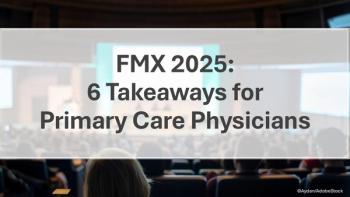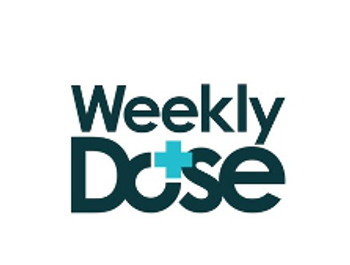
The Family AIDS Clinic & Education Services: The FACE of Multidisciplinary Care
A Columbus OH clinic specializing in the care of families affected by HIV has achieved remarkable success by becoming something more than just a medical care provider to its clients.
Hidden Gems: An Occasional Series Featuring Unique Approaches to HIV Care and Prevention
The Family AIDS Clinic & Education Services (FACES) at Nationwide Children’s Hospital in Columbus, Ohio, might be based in a pediatric setting, but it is hardly just for children. “What we are is a family-based clinic, providing care for families who are infected with HIV,” says medical director Kimberly Bates MD.
When it started 30 years ago, FACES was designed to serve HIV-infected infants, youth, and adolescents. However, it quickly evolved into a multidisciplinary program dedicated to caring for the whole family, providing not just HIV-related medical services, but pharmacy, mental health, social services, and nutritional counseling and support.
The clinic has been in operation so long that “we’re sometimes caring for families as they become families,” said Dr. Bates. That means caring for an HIV-infected woman of childbearing age who marries and has a child of her own. That child-even if virus-free-is still followed in the clinic for at least two years, and then transitioned to a community pediatrician.
The clinic treats 600 patients a year, a third of whom are between the ages of 13 and 25, 65% of whom are African American. “Most represent the highest-risk patients,” for HIV infection, poor adherence to treatment, and lack of secondary prevention, Dr. Bates said.
Yet the clinic boasts 80% viral suppression rates, three times as high as national rate of 25.3% overall.
“I think a big part of this is that the FACE family becomes the patient’s family,” said Dr. Bates. “They want to come see these people who will care for them.”
More Than an AIDS Clinic
The Family AIDS Clinic & Education Services is much more than just an AIDS clinic. Among the services it provides are:
• Child care during clinic hours. This increases the likelihood that parents will turn up for care. It also can be an incentive to get parents into the clinic in the first place, Dr. Bates said. “The kids say to their mother, ‘I want to play with Miss Kelly,’ (in the day care) and that gets the parent in to see us.”
• Vouchers so patients can’t use lack of transportation as an excuse to miss appointments.
• A full-time staff member who focuses on quality improvement (QI). When the clinic staff noticed that patients were not receiving appropriate dental care, the QI professional conducted an analysis to identify the problem and develop a solution. The result is an addition to the electronic medical record (EMR) that prompts the clinician to ask about dental care and ensures appropriate referrals and follow up.
• An acute-care clinic staffed by a nurse practitioner to manage issues that arise between regularly scheduled appointments. “We work hard to avoid emergency room visits,” Dr. Bates said.
• Emergency social support, such as food and clothing.•
Funding a Family-Focused Model
The FACES clinic is funded under the Ryan White HIV/AIDS program, which enables it to provide services like medication reconciliation and social work support that typically aren’t reimbursed under Medicaid or other health insurance programs.
The clinic’s model is dependent on its nurse case managers, who divide the patient caseload amongst themselves and ensure every patient receives recommended care. “We took the doctors out of it and gave the responsibility of follow up to the nurse managers, who already have this wonderful connection with patients,” Dr. Bates said. That’s why the clinic is able to do so much with so little money, she added.
The physicians have embraced this approach, she said. “All our clinicians understand the relationship the nurse has with the patient and that it’s an asset,” she said. They also appreciate that it frees them up to focus on more complex care, and streamlines often-lengthy discussions about medication and social needs. “It allows people to work at their highest level and, by doing that, we’re providing a more efficient model of care.” It’s also more cost effective.
As new reimbursement models such as shared savings, capitation, and bundling come into play, however, she expects to see better financing for such models.
Care Over the Lifetime
Primary and secondary prevention are also important components in the clinic’s mission. During every visit, providers discuss sexual activity, condoms, and other opportunities to prevent transmission, she says. And when patients enter into new relationships, they are encouraged to bring the partner in for a discussion on preventing transmission.
Clinic staff also educate parents about how to talk to their children about the risk of sexually transmitted infections, and provide resources to bolster the discussion. Of course they stress the same issues with the HIV-infected children they treat as they move into adolescence.
At the other end of the spectrum, the clinic is encountering more age-related conditions like heart disease and cancers in its older population, many of which are more prevalent at an earlier age in people with HIV. These patients often learn of their diagnoses in the FACES clinic, said Dr. Bates.
“They’re so used to coming in and getting their CD4 and viral loads, so we have good uptake of screenings (for other conditions),” she said, such as colonoscopies, lipid levels, and mammograms. Clinic staff also perform anal Pap smears on all patients to check for the human papilloma virus (HPV) and signs of anal cancer, and they vaccinate all youth against HPV.
The continuity of care is crucial in building the deep trust that is so important in maintaining patients in treatment, Dr. Bates said. “Many of our patients have someone on the team who has cared for them since they first started in care.” For instance, patients with hemophilia who contracted the virus as children when the blood supply was still infected have had the same physician and nurses for 25 years. “We have the wonder of being able to celebrate joys with patients,” she said. And when things aren’t going well in patients’ lives, the enormous trust built up over the years enables clinicians to have a greater impact than if they just met the patient a year or two ago.
The most important component in implementing a program like FACES is having champions at all levels, Dr. Bates said, from physicians to nurses to pharmacists and social workers. It’s also important to recognize that “these models aren’t built overnight. Each piece of the pie has been added in a stepwise fashion.” For instance, when the staff realized that mental health issues were a major reason for medication nonadherence, the clinic added two social workers dedicated to providing mental health counseling.
Dr. Bates and the rest of her staff aren’t content with their success, however. “Every day we ask, ‘Is there anything we could be doing better?’ ” If the answer is “yes,” then they go figure out how to do it.
Would you like to draw our attention to a HIV center worth our attention in this series? Please leave a message in the Comments box below.
Newsletter
Enhance your clinical practice with the Patient Care newsletter, offering the latest evidence-based guidelines, diagnostic insights, and treatment strategies for primary care physicians.































































































































































































































































































